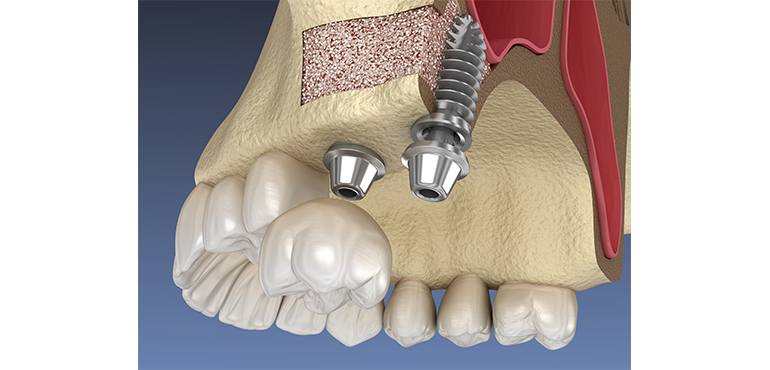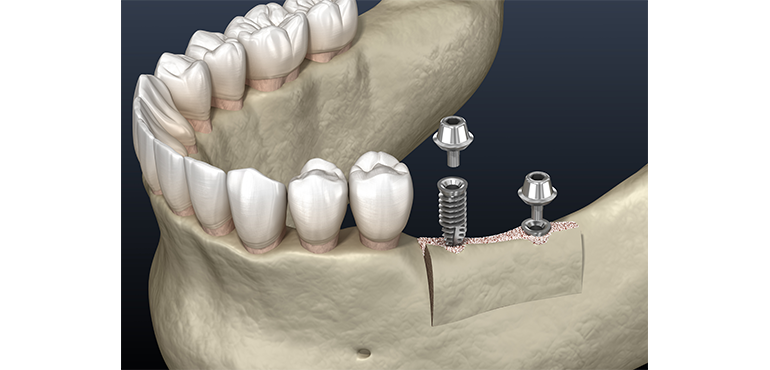The region, which will hold the prosthesis must have specific anatomical features to have the best conditions of aesthetic and functional prosthetic process.
Briefly; all procedures are called preprosthetic surgical procedures for improving anatomical features of the mouth and to ensure biological and functional compatibility of the soft and hard tissues in the edentulous areas with the prosthesis.
Sinus Lifting
Between skull bones, air pockets named the sinuses are located .When the teeth are lost on rear of the upper jaw, the sinus located above this region expands because of air pressure and causes the bone under that region become thinner. A certain amount of bone volume is needed in order to implement implants to replace lost teeth. The process to increase the amount of the bone by descending the base of sinus membrane is called sinus lifting.
Thickening of the jaw bone
This procedure means increasing the bone volume in horizontal and vertical direction. At the patients with high level bone loss, causes that leads to bone loss should be considered primarily when considering the compensation of bone loss, The bone is lost when it is osteoporotic. Causes that led to the development of osteoporosis are varied. Inflammation or infection , especially various hormonal imbalances such as menopause increases bone loss. Dysfunction also helps it in edentulous patients.
Crestal Splitting
This procedure is done in the case of a "knife blades" bone shape on one of its sides in order to avoid a bone graft. Filling materials are needed as well as the use of a membrane.
Period is usually the same than the one required for an implant surgery done within the same surgery.
Correction of the bone
This procedure includes flattening the bone surface and protrusion that occurs after the extraction. It is a general term representing the surgical correction of the alveolar crest.
Cutting of the diseased tissue
It means the excision of the pathological tissue (gingival enlargement that occurs for various reasons) in the mouth.



